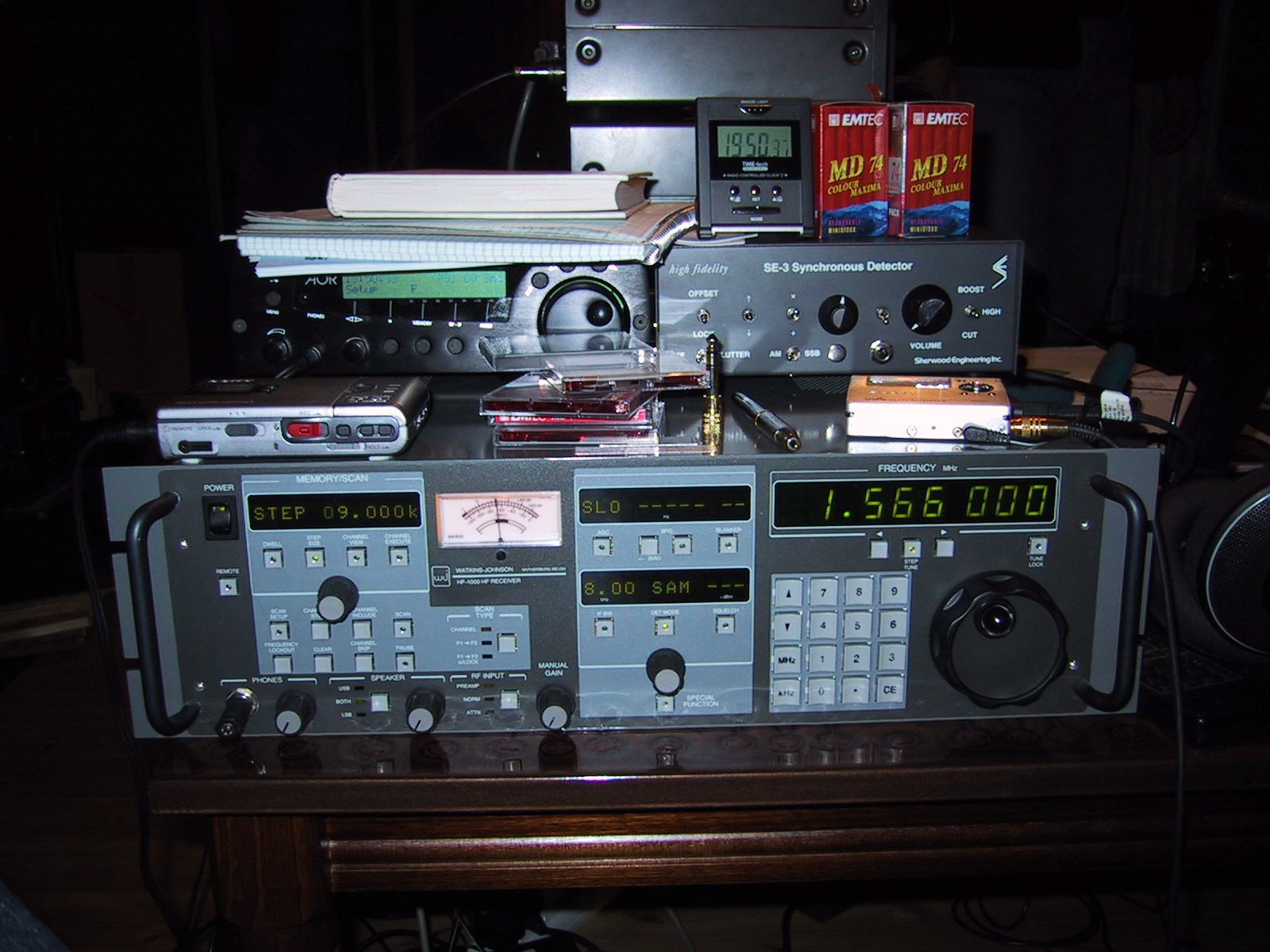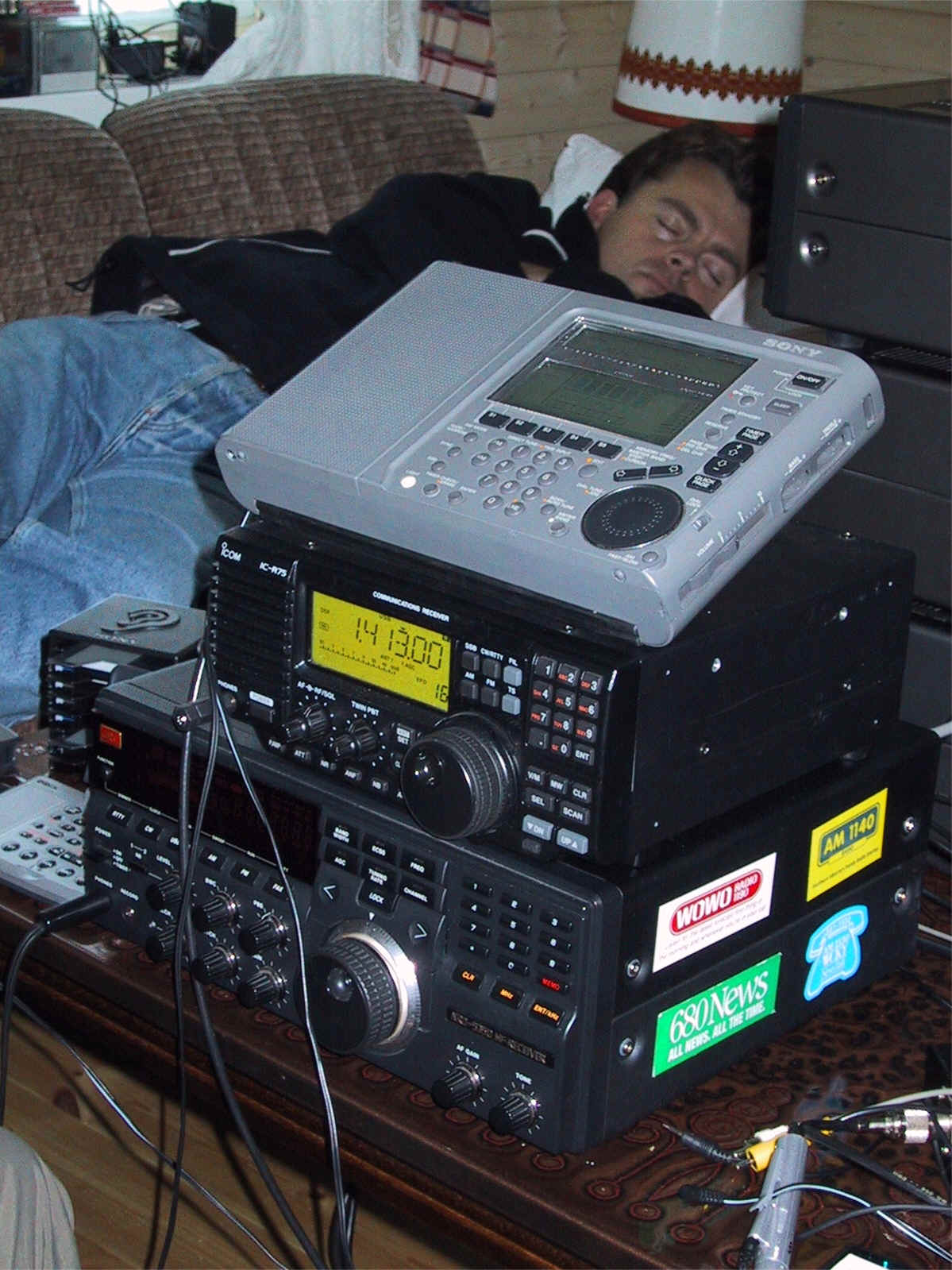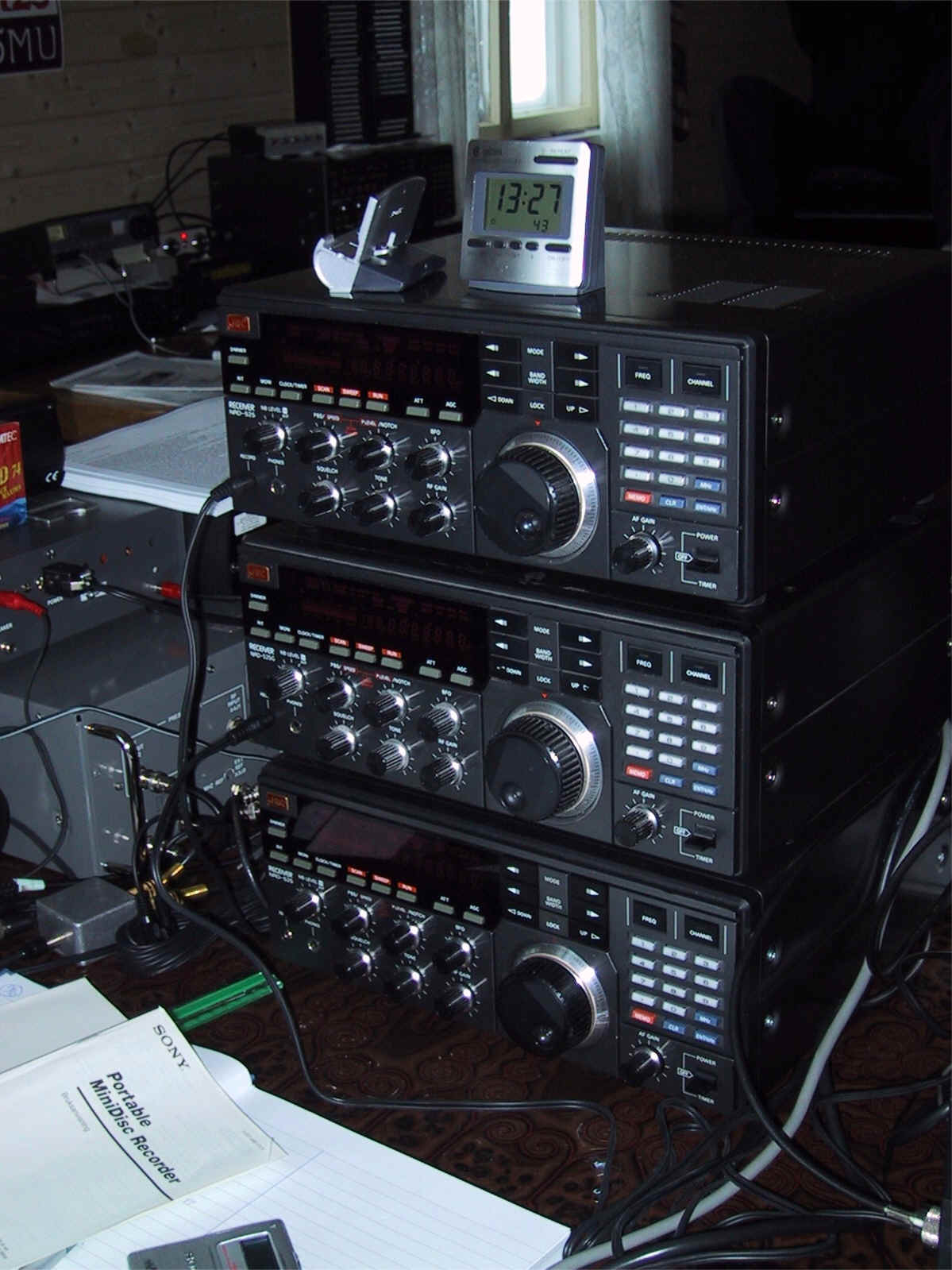


Kongsfjord - 70°43'N 29°21'E
KONG7 - report
The annual KONG7 DX-pedition was held from Oct 17 to Oct 22, 2002.
Once again, the participants were:
Arnstein
Bue: 3 x NRD-525
Rolf
Torvik: NRD-535D, Icom R75, Sony ICF-SW77!
Odd-Jørgen Sagdahl: HF-1000A, AR7030+
Bjarne Mjelde: NRD-525, AR7030+, Palstar R30


Antennas
The
antenna farm was brand new:
200
meters at 314 degrees (roughly the CST area in North America)
330
meters at 333 degrees (towards the MST/PST area)
340
meters at 359 degrees (Alaska, Hawaii)
550
meters at 058 degrees (Japan, Western Pacific)
450
meters at 085 degrees (China, Philippines, Australia, doubling as Latin
America on its backlobe)
K9AY
loop 11m tall, 32m wide.
Noise!
Unfortunately,
KONG7 suffered from noise that seemed to emerge at the start of the
period, and end hours before the expedition ended!
It now seems evident that the noise coincided with a change of
weather. We had northern gale force winds at the beginning – the
combination of snow and salty air caused a 22kV power line insulators to
produce high-level RFI. This especially affected the Asia wires, with a
noise level of around S5 to S9, meaning a signal had to be quite strong to
be readable. Although weather improved, the humidity was very high and may
have had a negative effect on RFI.
We
have a Loran C station close by, and it affects DX-ing as well. The noise
emerges when several DX-ers with several receivers connect their things,
and is probably because we had insufficient grounding of our equipment.
The Arctic shores of Norway with its combination of humidity, salinity and
temperature changes have often proved to be extremely challenging and
requires equipment of higher quality than elsewhere. Good news about the
Loran C is that the system is scheduled to be phased out by the end of
2005, making January 2006 the right time for arranging KONG10.
Conditions
on Oct 17 were promising, with good signals from Asia prior to the arrival
of Arnstein, Odd-Jørgen and Rolf. Bjarne logged a low-powered NHK station
on 1602 at 1320, and throughout the afternoon Japanese stations were heard
with quite good strengths. Then towards the evening signals disappeared,
and the night passed without any signals from North America.
Oct
18 passed without any interesting signals. Some Indonesians were heard
with good signals on SW though, and we heard some Indian and Pakistani
stations on MW.
Oct
19 and 20 improved somewhat. Still no North Americans, but conditions on
SW towards Indonesia and Papua New Guinea improved. Six PNG stations
heard, among them R. Morobe 3220, R West New Britain 3235 and R Manus 3315.
Even better was RPDT2 Manggarai, Ruteng on 2960. On MW mostly SE Asians,
but DZAS FEBC 702 was noted with a strong signal on their s/off. We
suspect they have had a (temporary?) change of pattern, or was running
non-directional, since their main lobe is very distinctly southwards and
away from us. Early evening also brought forth FEN Okinawa 648 with a
strong and steady signal.
Oct
21, finally some traces of trans-polar signals from North America. Only
few signals audible, mostly on the upper part of the MW spectrum, and
mostly confined to the Lakes – WLQV-1500 and WAAM-1600 had good signals.
Later on the only Hawaiian
was heard, KAOI-1110.
Oct
22 was departure day, the guys from the south had to pack their gear at
0600 to reach the plane. North America became audible from 0330 onwards,
upper MW only, and mostly easterly. Among those heard were CFMB-1280,
WLAM-1470, WGVU-1480, WPTR-1540. Some recordings that were attended to
later revealed that there were a couple of really good catches too –
WSDS Salem Township MI 1480 was noted with an ID at 0549. Probably not
heard in mainland Norway before (and not very usual in Sweden and Finland
either). A very interesting UNID station on 1400 took some effort to find
out about, but finally disclosed itself as being KJFF Festus MO.
Definately the best NA catch of KONG7.
Conclusion
The
loggings of WSDS and KJFF say something about the potential of this QTH.
Although we have heard many interesting NA stations in Kongsfjord, we are
quite certain that we have never been there on occasions when conditions
towards North America were really good. Although the beverages are rather
short compared to the best Finnish and Swedish Arctic DX sites, the
coastal location should outweigh this to an extent. We hope that on a
future KONG expedition (preferably the next!), the timing will match with
excellent conditions.